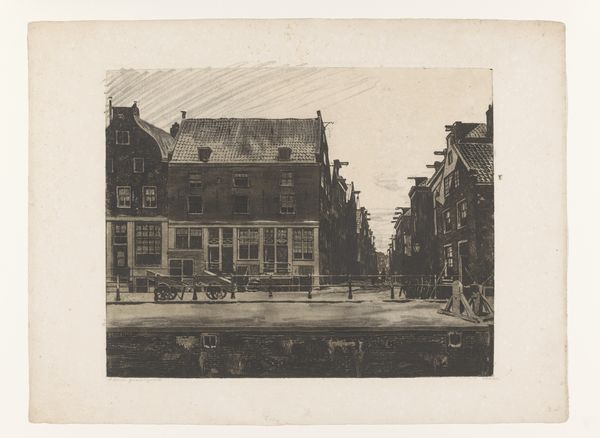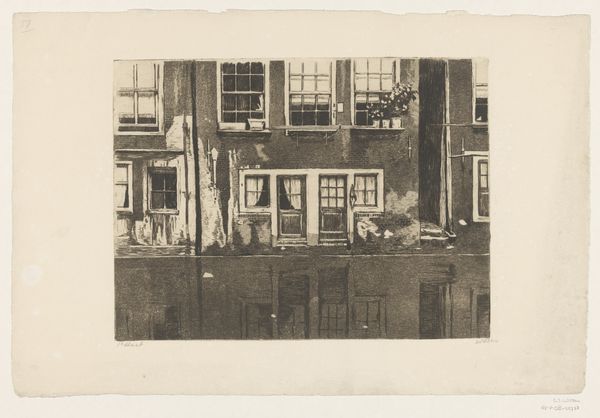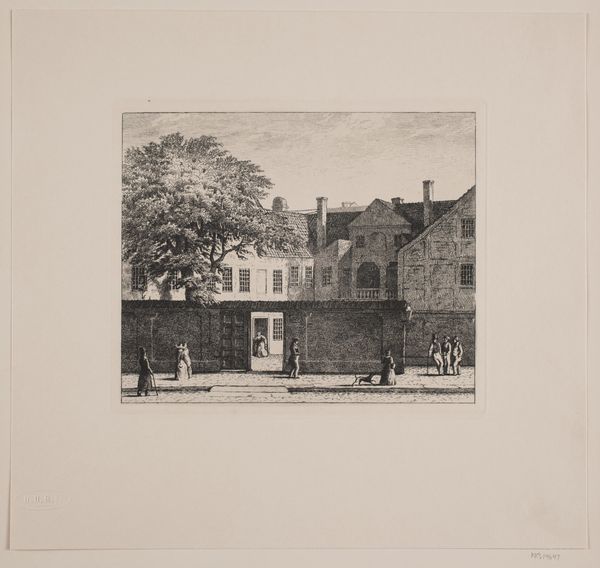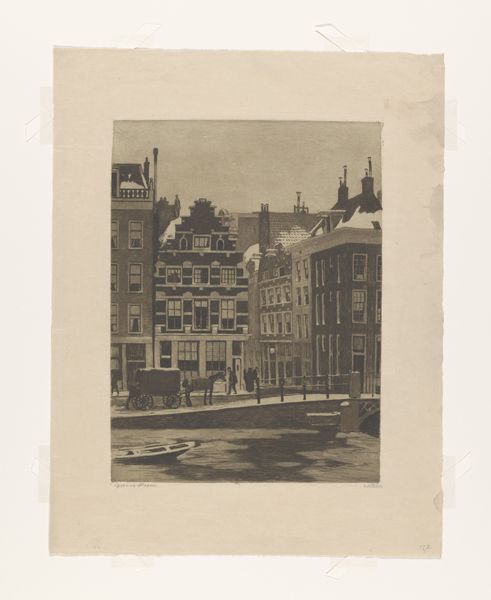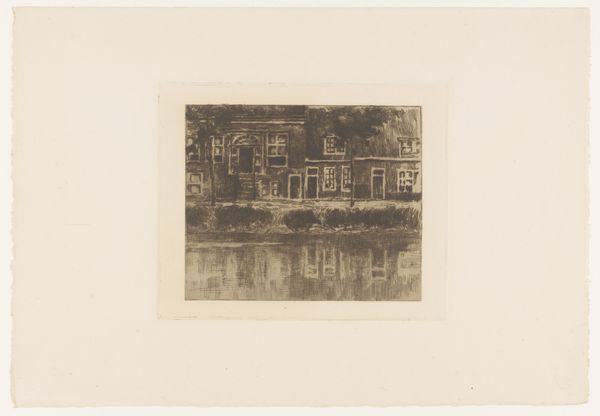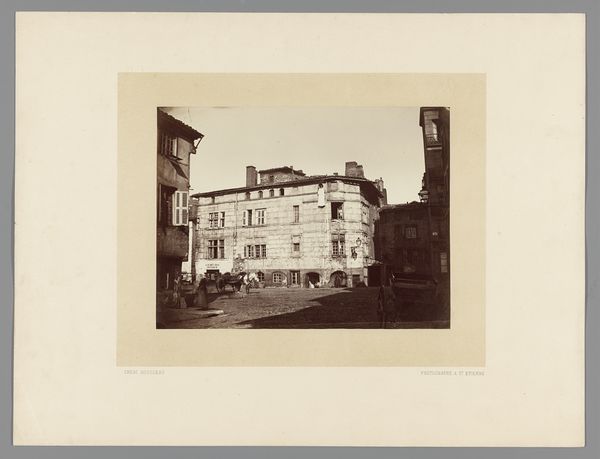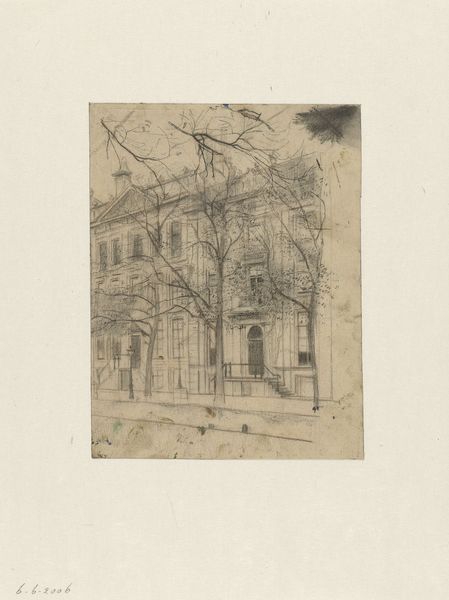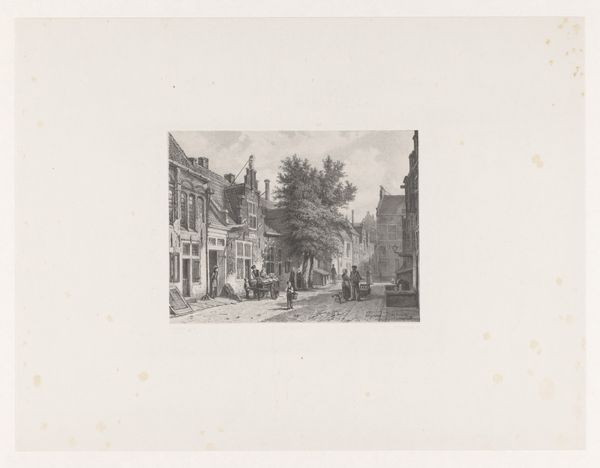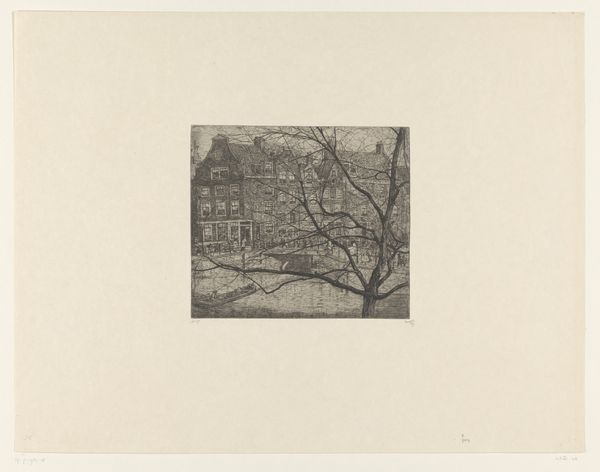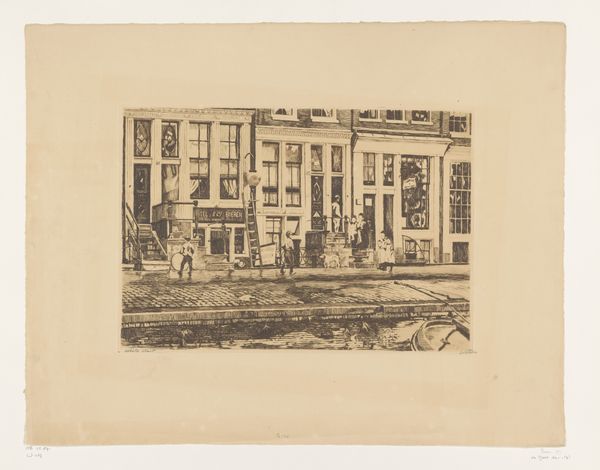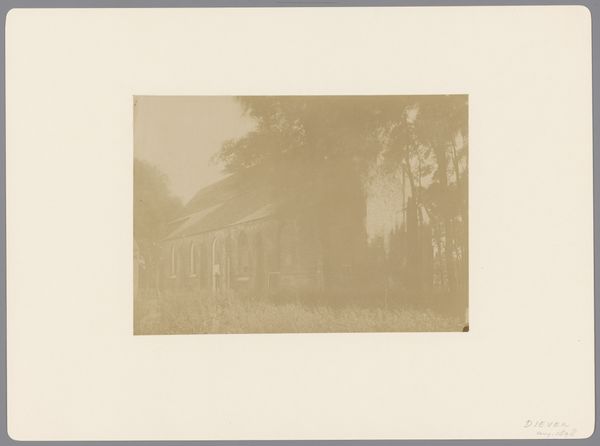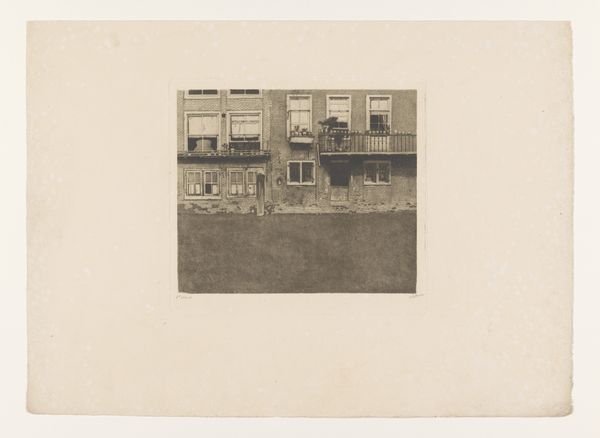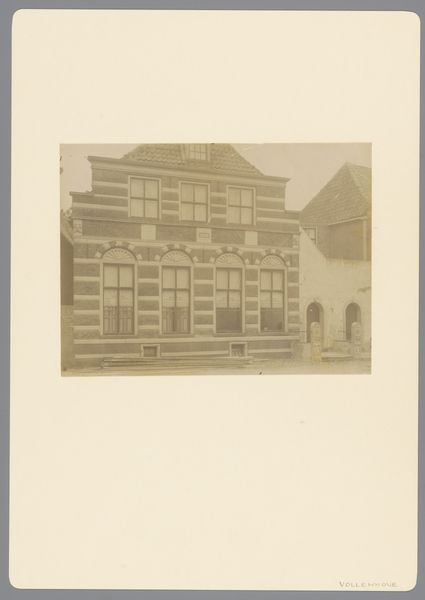
#
white colour balance
#
photo of handprinted image
#
natural tone
#
ink paper printed
#
light coloured
#
repetition of white
#
white palette
#
tonal art
#
repetition of white colour
#
remaining negative space
#
street
Dimensions: height 384 mm, width 483 mm
Copyright: Rijks Museum: Open Domain
Editor: This is "Jodenhouttuinen" by Willem Witsen, dating from between 1875 and 1923. It's a print, housed here at the Rijksmuseum. The tonal range really strikes me. It's a somber, almost ghostly image of a street scene. What do you see in this piece? Curator: I see a powerful intersection of place and history, charged with social and political meaning. The “Jodenhouttuinen,” or Jewish Timber Gardens, suggests a location historically linked to Amsterdam's Jewish community. Knowing that, how does the somber mood you mentioned resonate now? Editor: It shifts my perspective. It's not just a pretty street; it feels like a memorial or a reminder of a community’s presence. Curator: Exactly. Witsen was part of the Amsterdam Impressionism movement, capturing everyday life. But consider: who's everyday life was being represented, and whose was being erased or marginalized? What do you notice about the perspective he’s chosen? Editor: It's a very still perspective. Empty even, giving me an isolating feeling. As if no one occupies the buildings any more. Curator: The emptiness in the image invites reflection on absence. Given the name, and the history of the Jewish community in Amsterdam, we must consider if it provides insights into larger socio-political contexts such as alienation. How do you view this artwork now? Editor: I now understand there is more to a city than what immediately meets the eye. Thank you! Curator: Absolutely! The interplay of place, history, and artistic interpretation really makes this artwork particularly evocative.
Comments
No comments
Be the first to comment and join the conversation on the ultimate creative platform.
